It would be a great shame to equate Sri Lanka with its capital, Colombo and vice versa.
While the city has great appeal due to its location on the sea and has architectural accents that reflect its many historical influences, it’s still a city. We are keen to start exploring what lies beyond Colombo. Yet, we are not ready to go “on the road again”, as Ben’s job requires some additional meetings in Colombo, so we have a one day excursion in mind.
One recommendation that seems like a no brainer is to go to “Lunuganga Estate” – once the country home of the renowned Sri Lankan architect Geoffrey Bawa. Our curiosity is piqued as we both equally enjoy architecture, construction using local materials and gardens. Our previous home in Highland Park, Illinois was a unique design by a local Chicago architect which was in the lineage of Frank Lloyd Wrights approach of clean modernist lines.
Geoffrey Bawa is considered among the most influential Asian architects of his generation. He was the leading guru behind what is called “Tropical Modernism“. While in Colombo, we seek out a restaurant (the Gallery Cafe), that previously was Geoffrey Bawa’s office in Colombo.
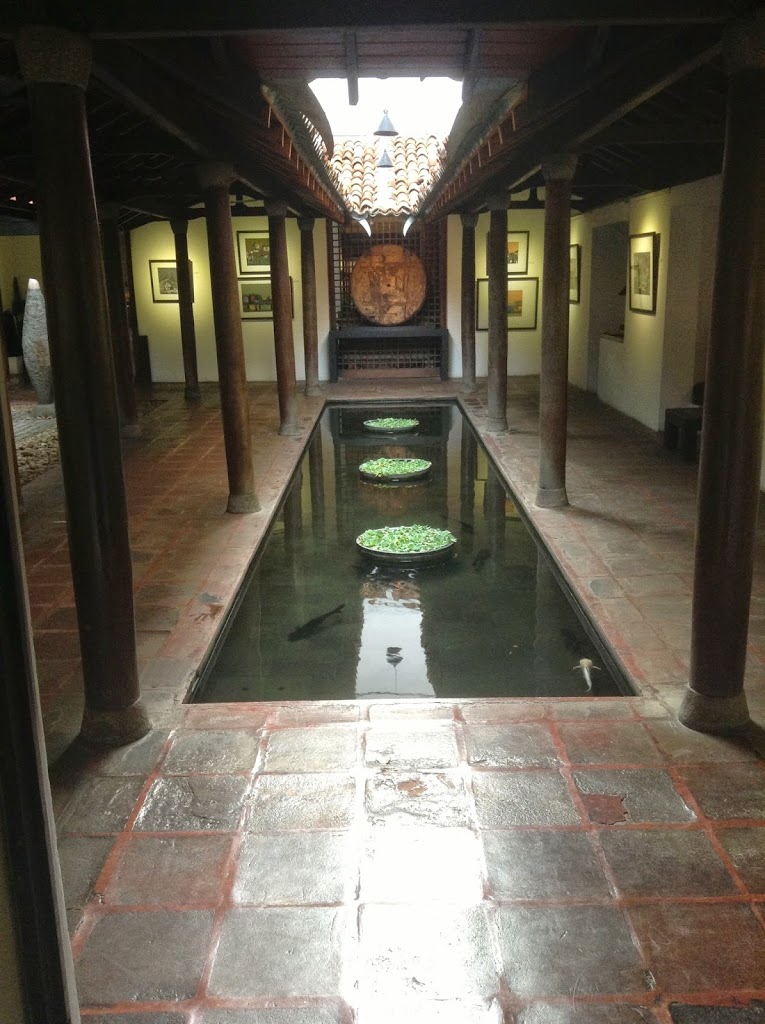 |
The inside/outside interplay is one we are well familiar with, due to a similar open air lifestyle in Nicaragua.
Bawa combines outdoor/indoor design and infrastructure with a delectable palette of materials – stone, polished cement, antique beams restored to their original brilliance. |
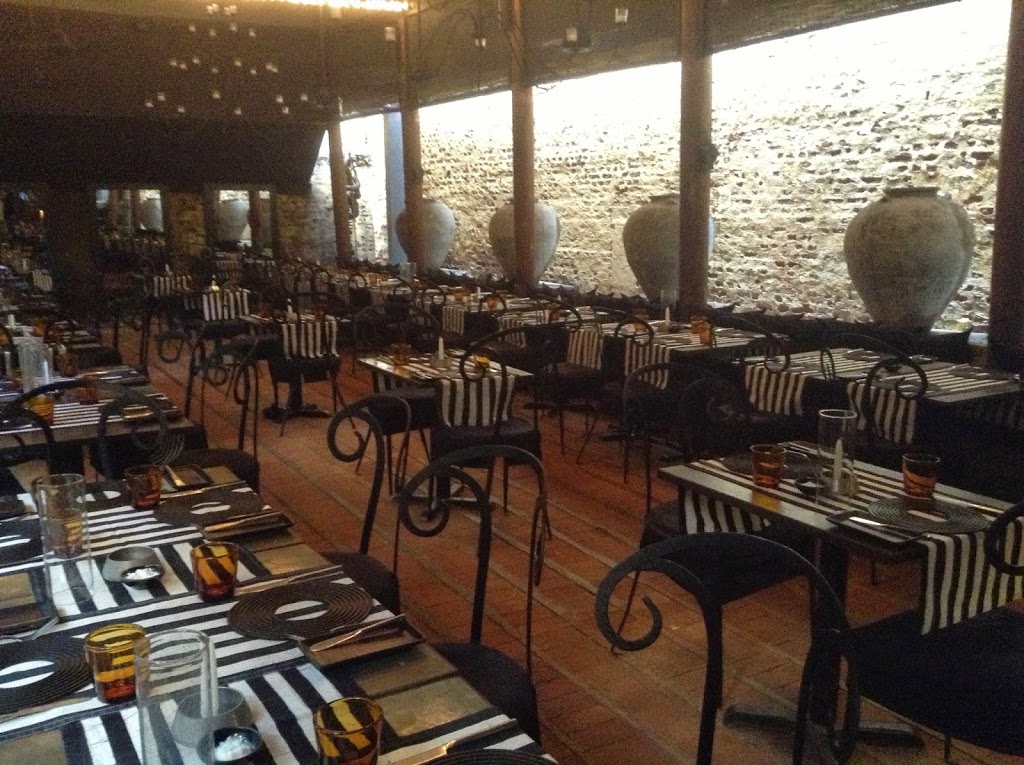 |
| One surprising element and not one that we particularly resonate with, is the extensive use of black and white. Granted it contributes to the “modernity” desired, but it is a stark modernity. We will both take splashes of color over black and white, any day. |
The guest house where we are staying in Colombo, faces the sea and train tracks. It seems rather obvious, therefore, to go by train, rather than by bus. We watch the trains go by at sunset, and some of them are bright red, but all of them are full, with people hanging out of the open doors. Watching the trains go by right next to the sea is very reminiscent for me (Peta) of the train in Fish Hoek, Cape Town, which runs by the coast in similar fashion.
Speaking of South Africa… Being South African in Sri Lanka, is very fun. EVERYONE knows South Africa. Why? Because of its famed cricket team of course. Given that Sri Lankans are absolutely passionate about cricket, they immediately go into conversation with me about this cricketer on the South African team and that move. In actual fact, I used to be on a girls cricket team in Johannesburg in high school, and my brother and I spent many hours watching professional cricket together, I am not up to date with who the best players are and what scores they achieved. Pretty soon though when people inevitably ask me “Where are you from?”, I add “South Africa. We beat you last time!” which always gets a broad grin and keeps the conversation going.
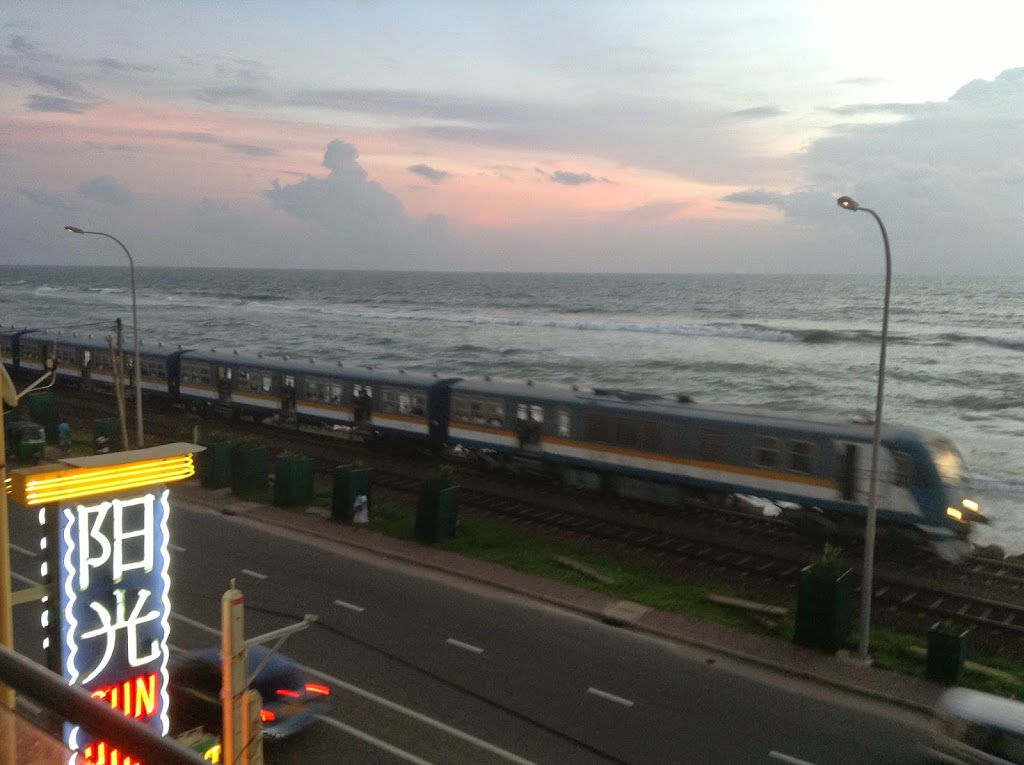 |
| One of the many trains passing in front of our guest house. |
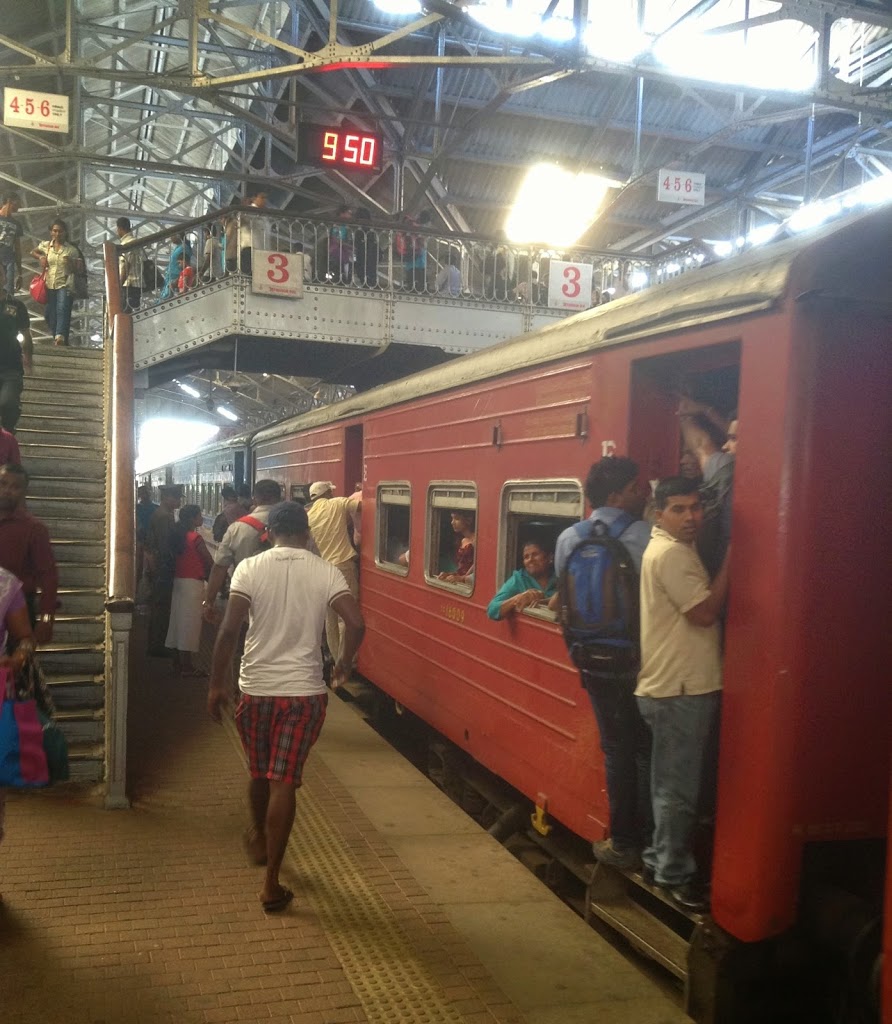 |
| “ALL ABOARD….!” The train pulls out of the station with people jumping on last minute and hanging onto the open doorways (Nicaraguan bus style!) |
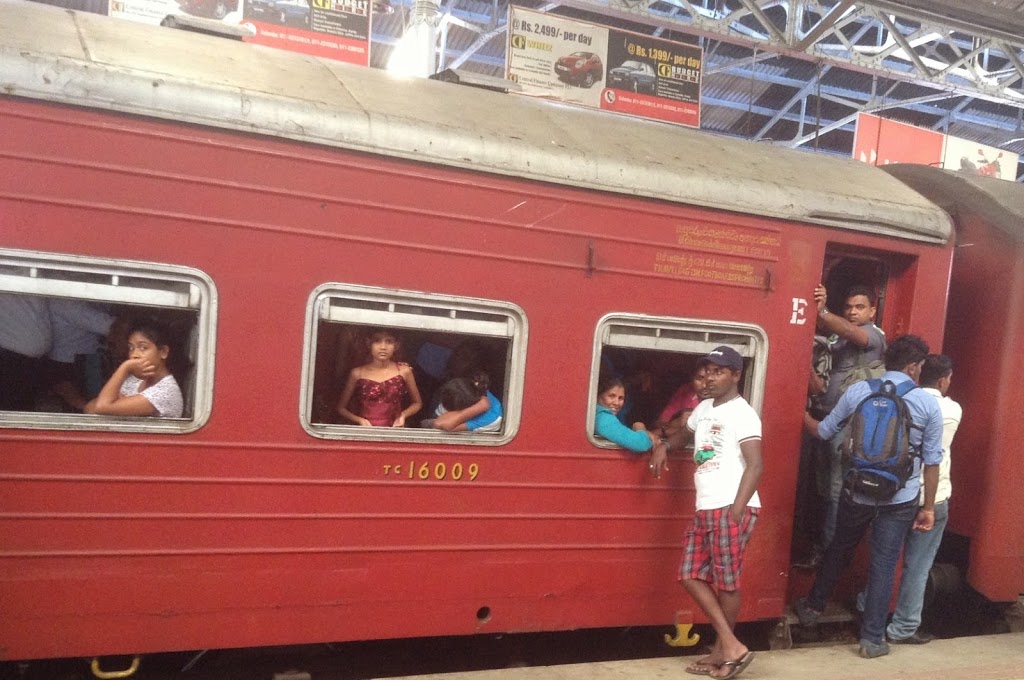 |
| These types of trains bring back really good childhood memories of growing up in South African and taking train journeys. |
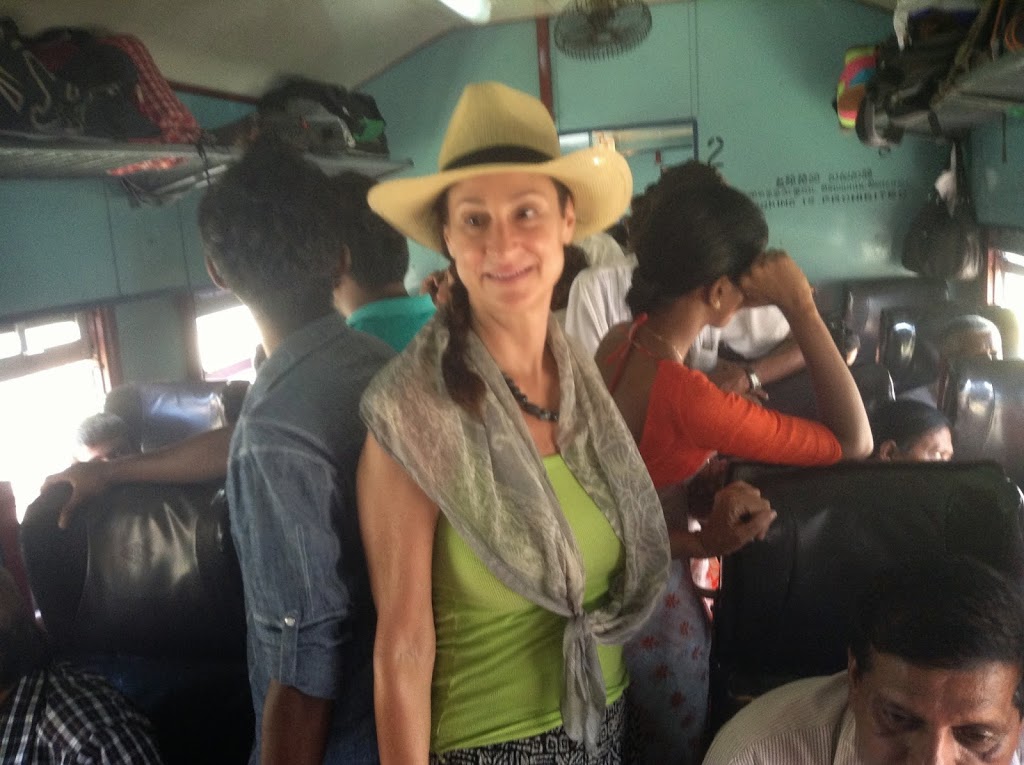 |
| Train was pretty full, not enough seats; We stood in the aisle for the 1:30 hour journey, dodging the flow of vendors who were selling water and snacks to travelers. |
In between the train station and our destination, we stop by a Hindu-Buddhist temple.
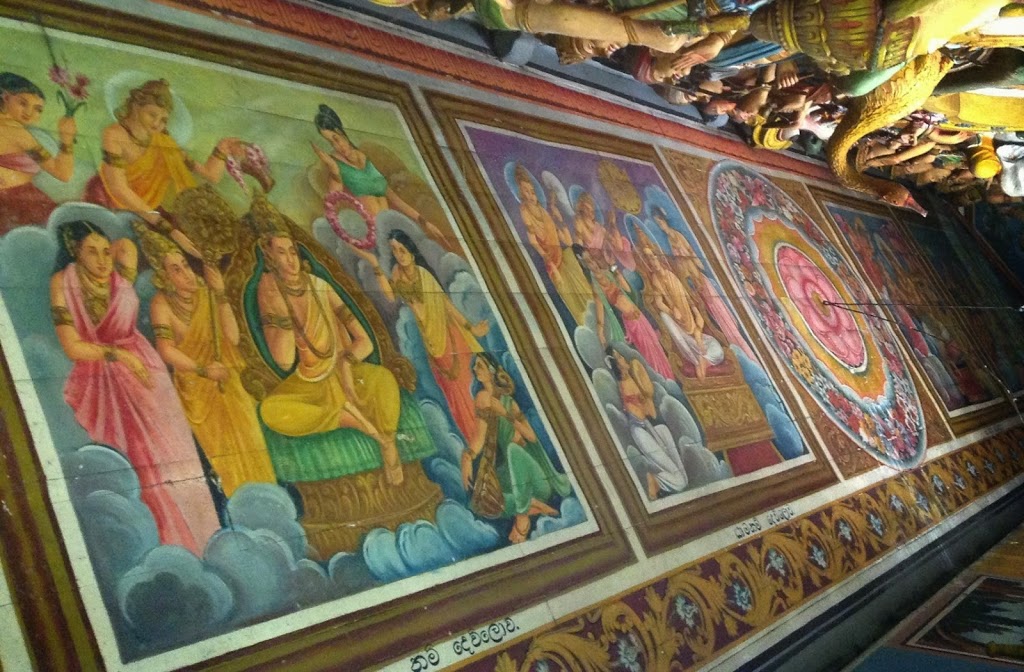 |
| The ceilings are wooden planks, painted bright colors which depict scenes of the life of the Buddha. |
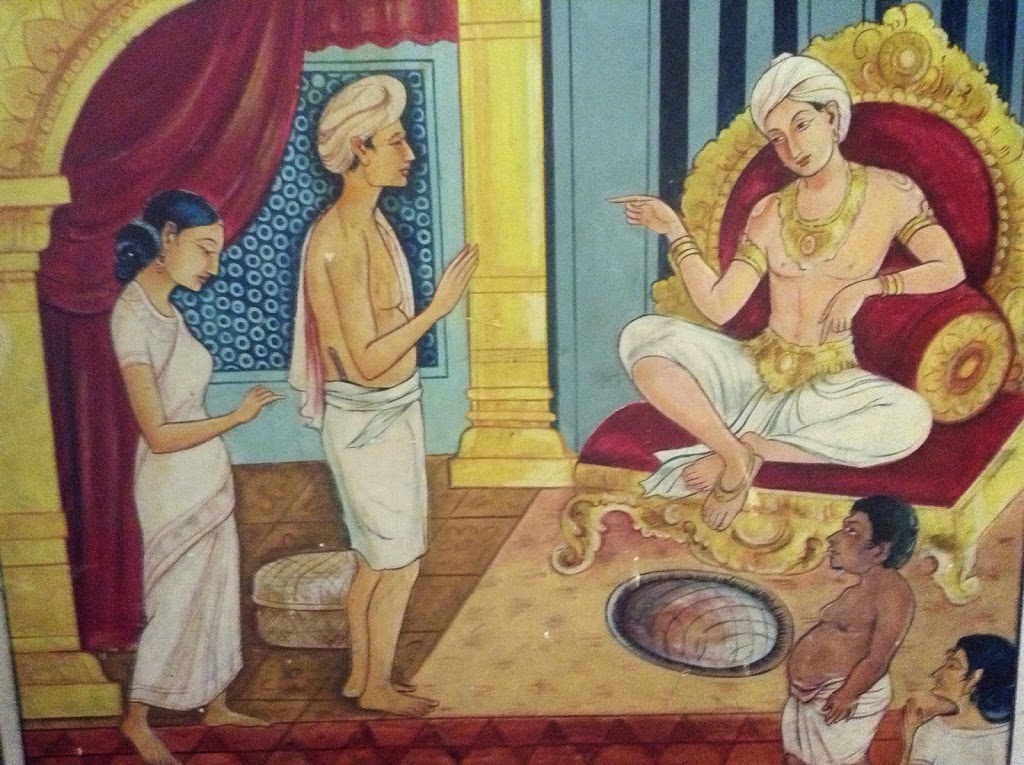 |
| Check out this dude’s stomach on the right. He needs to stop eating all these delicious Hoppers and Paratha breads. |
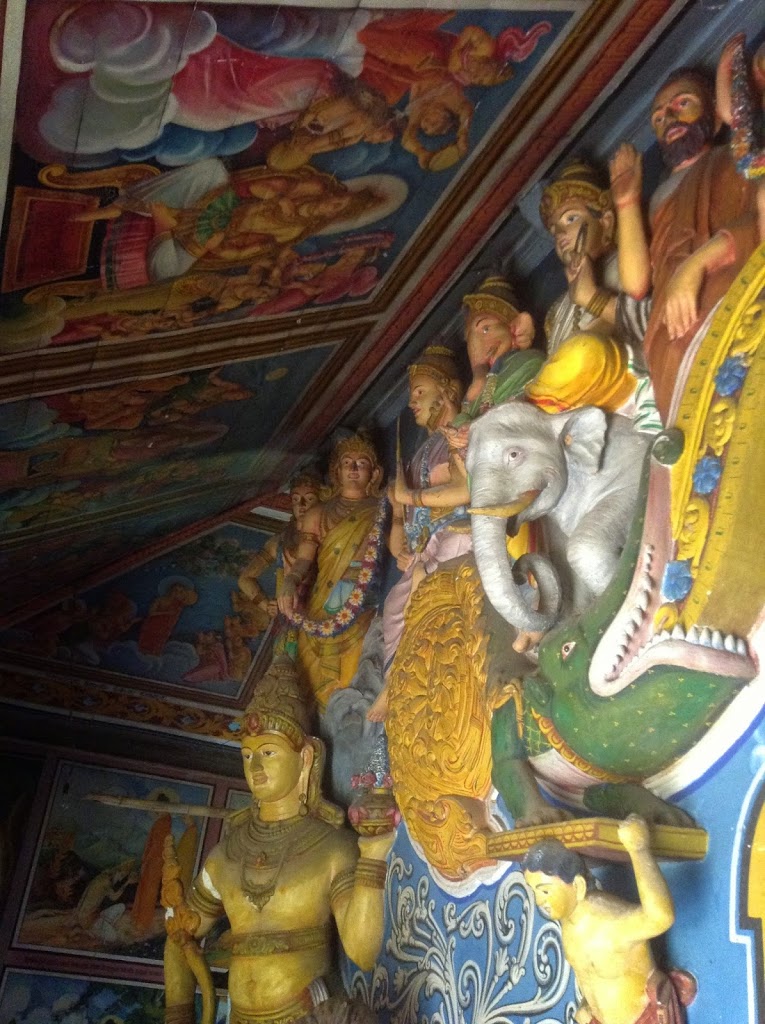 |
| Elephants and a variety of characters seem to literally “jump out of the walls” in 3D. The combination of paintings and sculptures which are connected to the wall, is something we have not seen before! |
It took a bit of logistics to get here… Tuk tuk, train, tuk tuk ride… but it’s all adventure for us at this point…
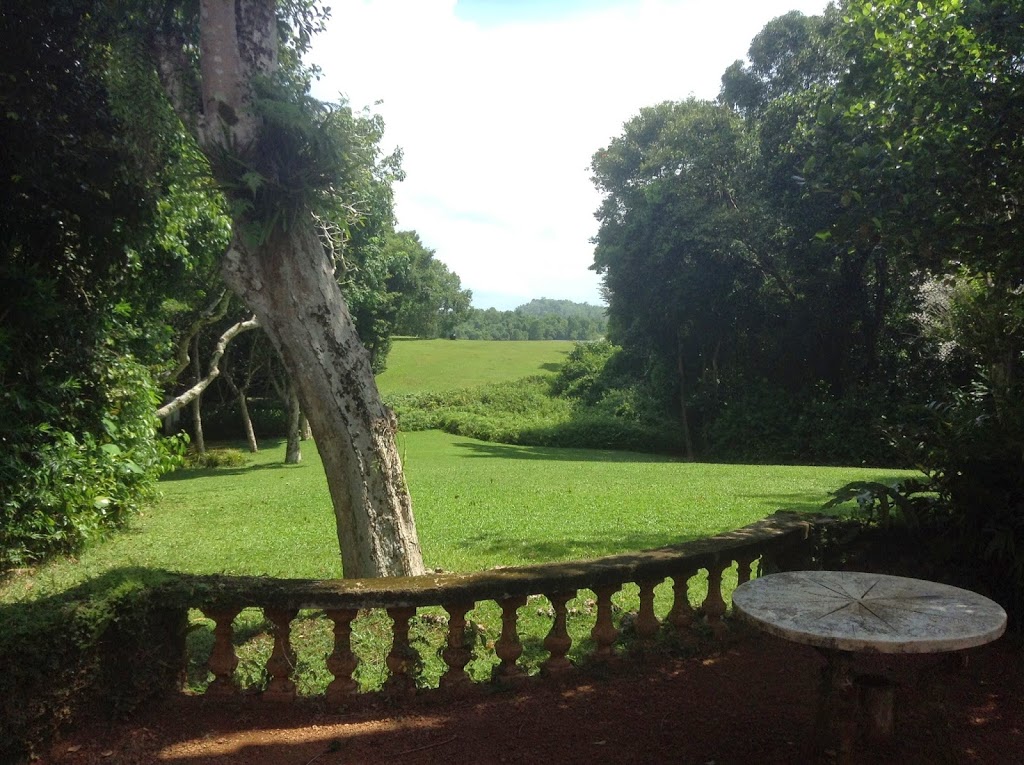 |
| Vista over the extensive gardens towards a lake at Geoffrey Bawa’s weekend house. |
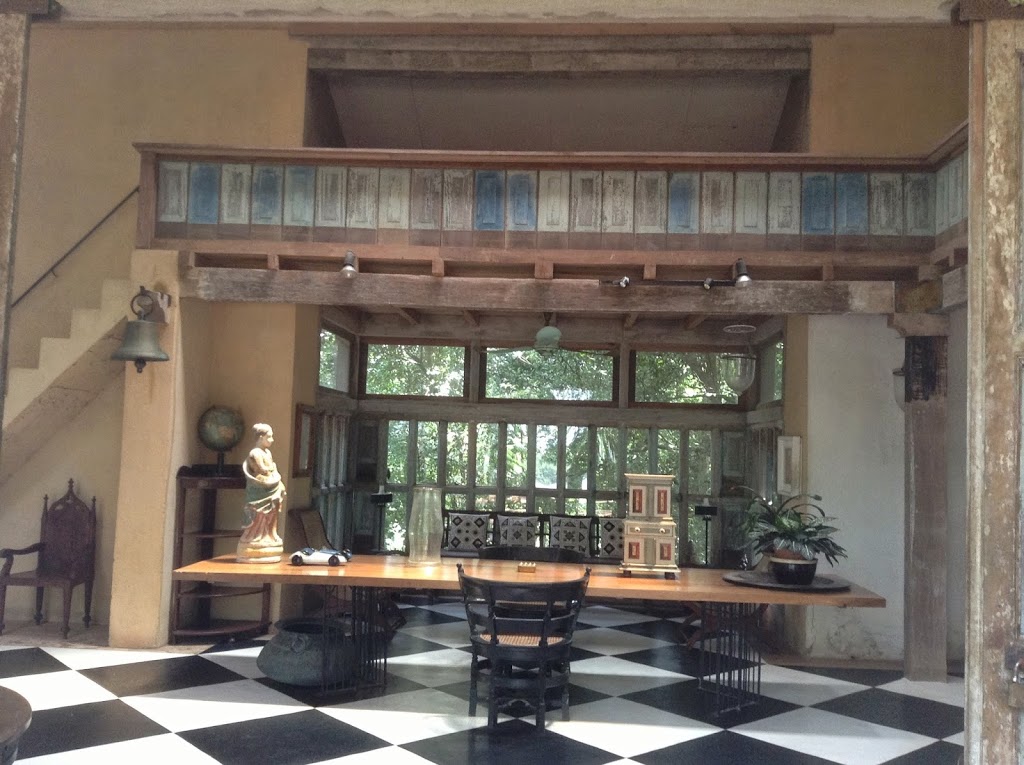 |
| Bawa grew up in Europe, hence the black and white checkered European style floor in combination with Sri Lankan natural materials. |
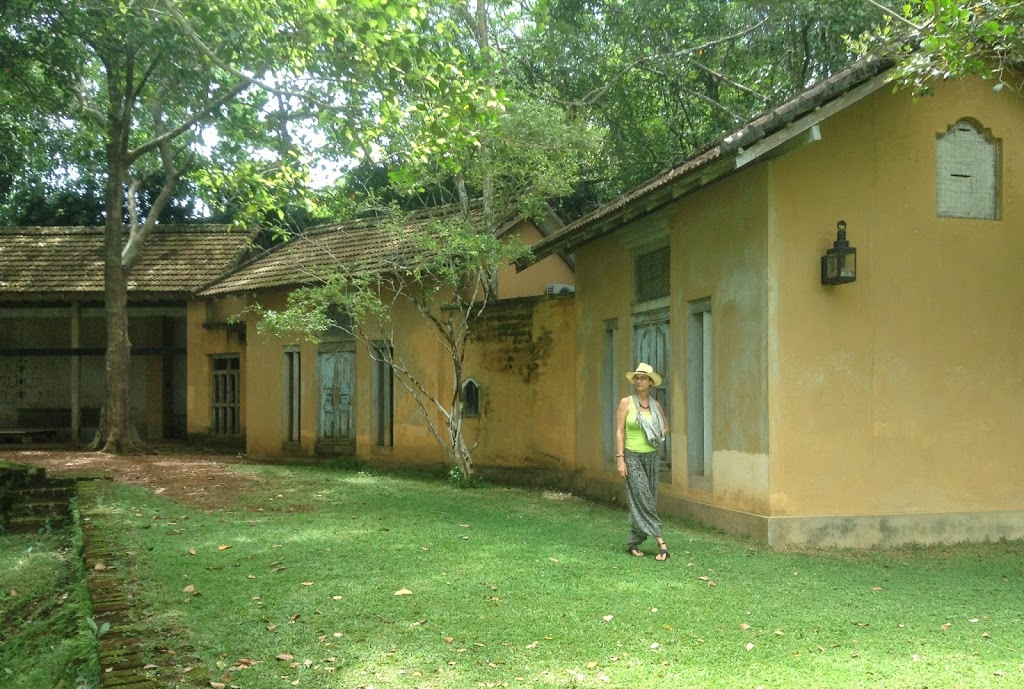 |
| The property has 7 distinct buildings. This is one of the guest houses in the garden. Colonial influence on the outside and tropical modernist inside. |
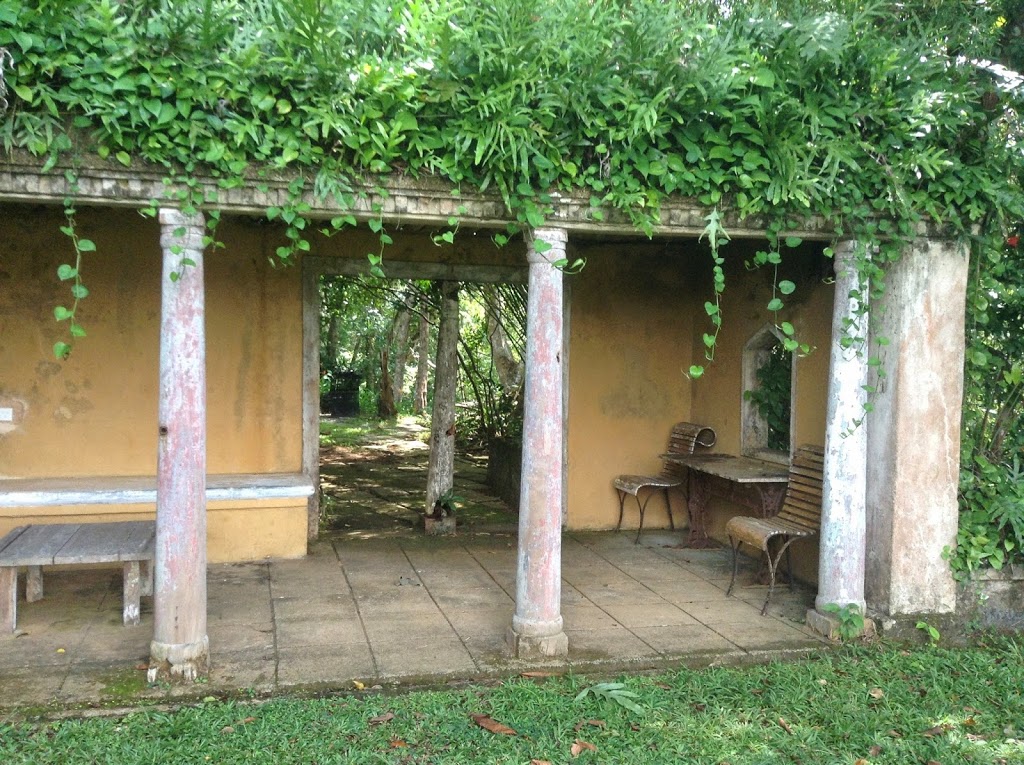 |
| Over the years Bawa added features to his gardens, such as this covered sitting area with a lovely patina and living roof. |
We always enjoy opportunities to understand local industry. On the way back to the train to Colombo, we stop on the side of the road where some kind of coconut factory seems to be in operation. We go and check it out…
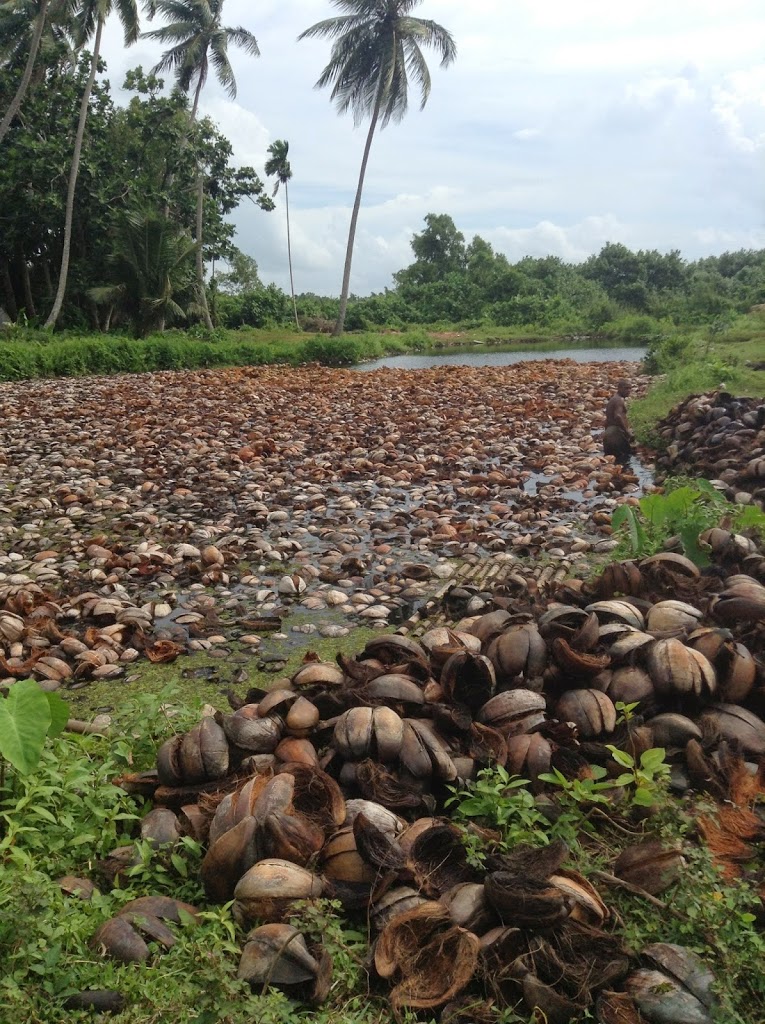 |
| This is what we see from the tuk tuk on the road. A coconut shell river! There is a man in there and we are wondering what he is doing. So we stop… |
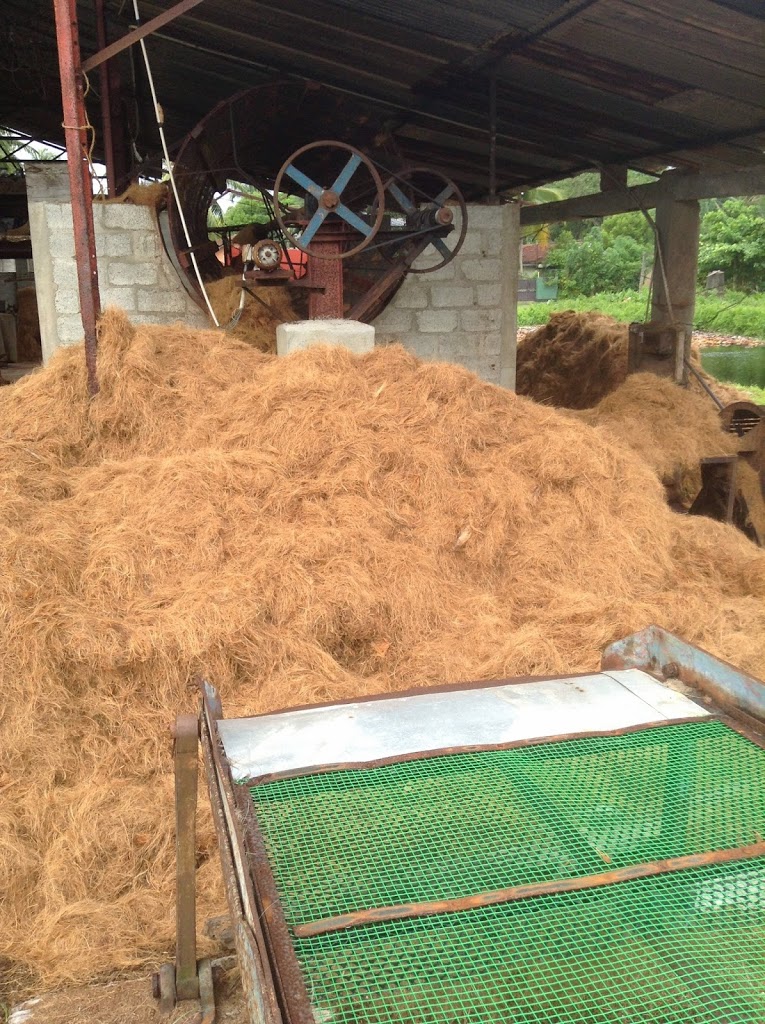 |
| Once the coconut shells are softened by soaking in the water of the river, they are crushed into a fibrous material using a large old antique device. |
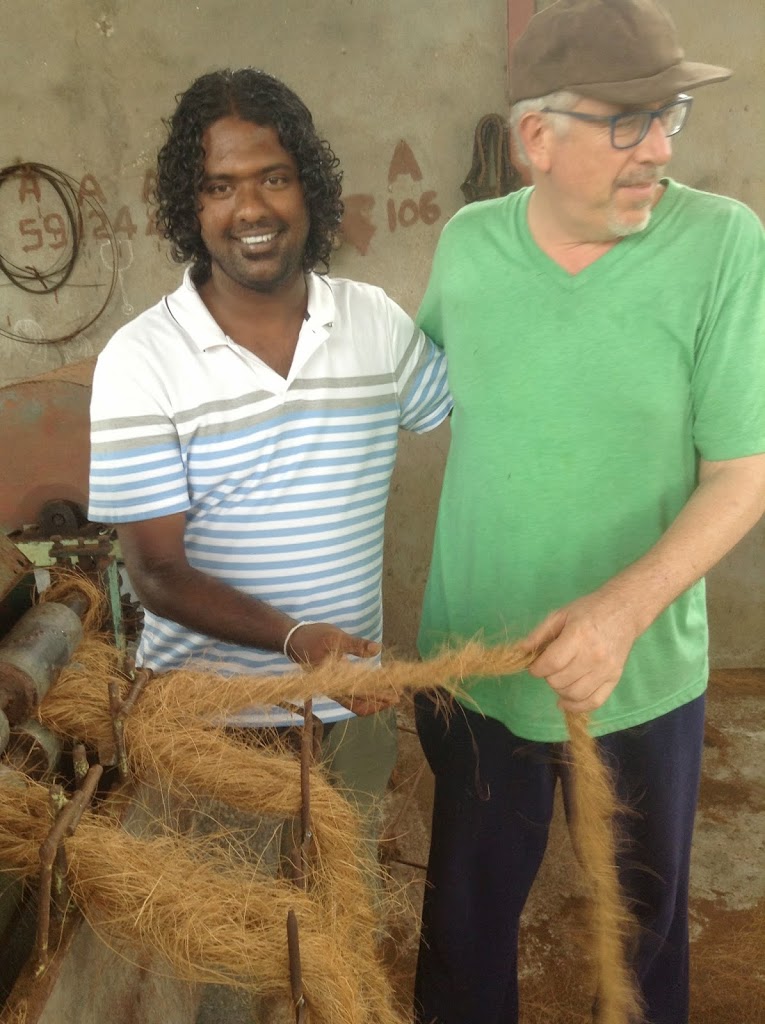 |
| The coconut fibre is braided together into long strands before it is twisted into rope. |
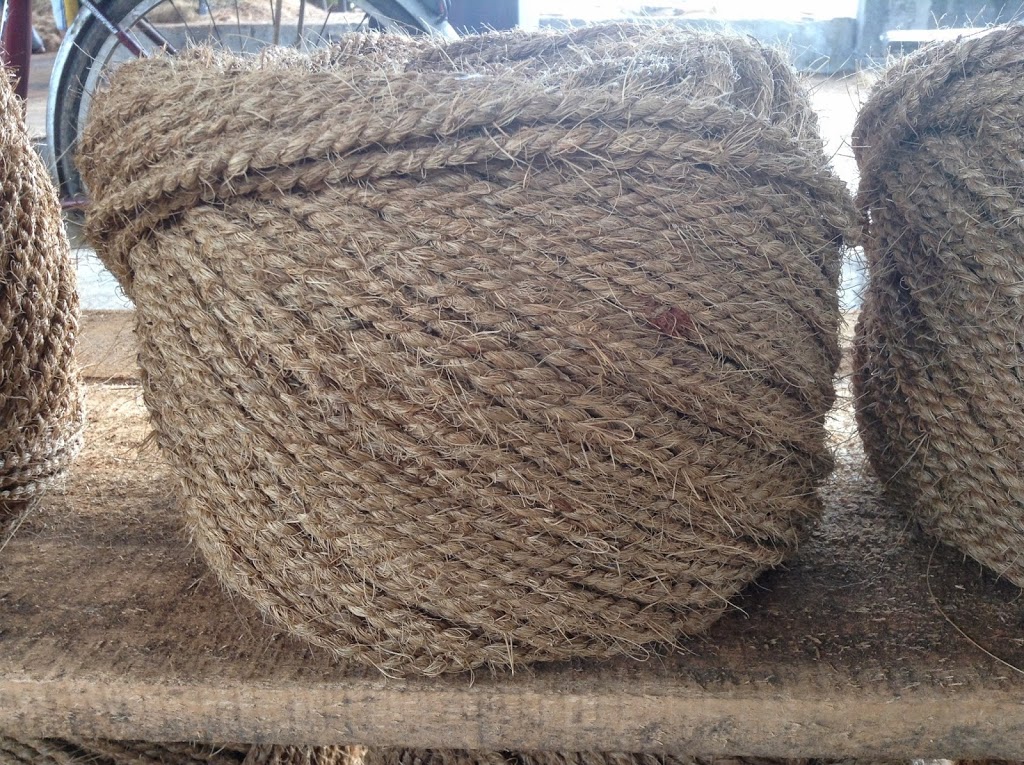 |
| This is the finished coconut husk rope product. Another products from this little factory is coconut mattress stuffing. |
Back in Colombo, we treat ourselves to a 50 cent Hopper. What’s a hopper you ask? A Sri Lankan crispy type of crepe with a bottom heavy center which is similar to papadam, a S. Indian bread. Typically hoppers are served plain or with egg whites in the bottom and are eaten for breakfast or dinner.
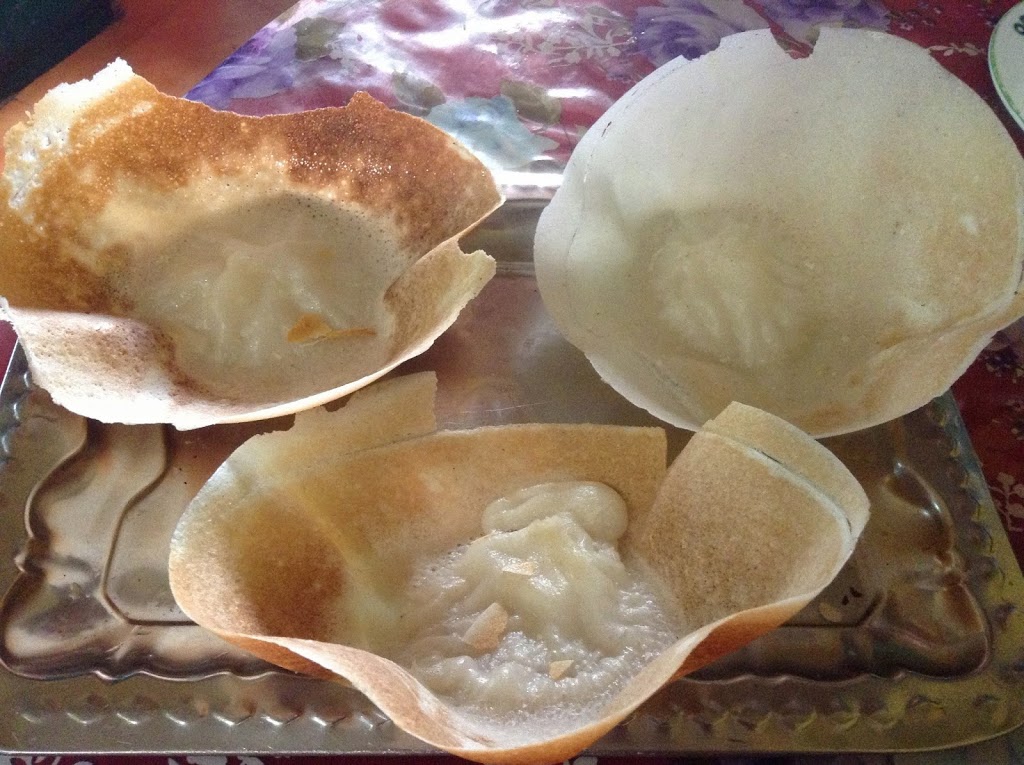 |
| Delicious Sri Lankan specialty…. Hoppers with egg white. |
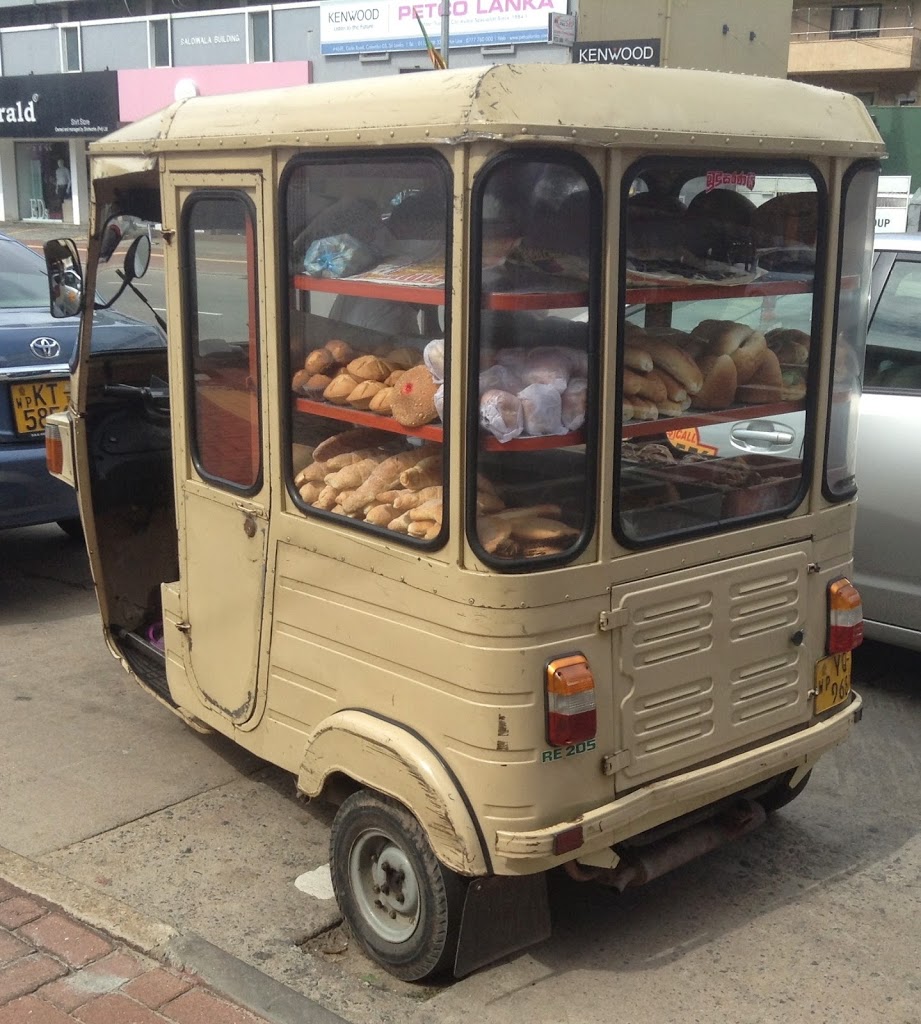 |
| Tuk tuks are everywhere! Our favorite though is the “bakery tuk tuk”. Bread on wheels ~ a great concept! |




















The hoppers look interesting! By the way, papad/papadum has different variations in both north and south India.